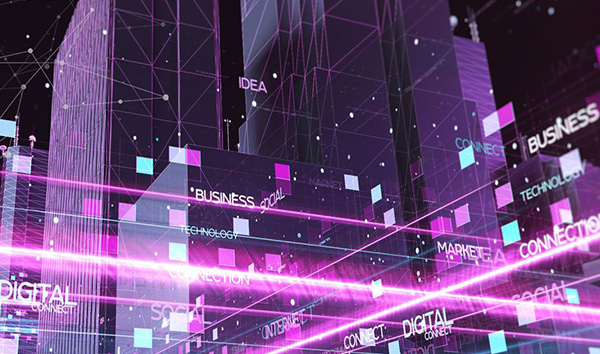We have come a long way from the first commercial use of Oculus Rift VR headset 0f 2013. Yet, most people associate the technology of Augmented Reality (AR) and Virtual Reality (VR) with the realm of gaming. However, many industries including marketing, healthcare, real-estate are accepting the immense potential of VR to improve their business. A report by Goldman Sachs group estimates the virtual and augmented reality to become an $80 billion market by 2025.
Even financial institutions like the banks are well aware of this conundrum, and many firms are aggressively experimenting with the new coming technology to enhance customer experience (CX). From basic apps that use customer location to help locate ATM branches nearby to promoting banking solutions in an engaging 3D environment. Some financial institutions are using it as a marketing tool, others are using AR to offer customer-centric apps that display real-time cost and other information associated with properties which are up for sale, offer a mortgage calculator and more.
According to a study, ‘AR/VR can transform financial data into a visual, engaging experience and can eventually bring the face-to-face experience into a customer’s home‘. The possibility of hybrid branches is also in the pipeline where physical branches use AR technology to offer self-service like chatbots, or robots to provide information. If required, customers can also connect to an actual bank-representative via video conferences.
All things said and done, the idea of banking in virtual reality is still half-baked and the road to reach that reality is daunting and surrounded by skepticism about the possibilities of virtual banking. Nonetheless, there are a few corners in the financial sector where VR and AR have already made an impact:
 |
Immersive Experience through Data Visualization |
The financial industry has a lot riding on analyzing large amounts of data on a day to day basis. Data visualization helps financial traders and advisors to get a visual breakdown of the copious amount of data and make informed decisions about wealth management. Using the modern technology of VR and AR, data visualization is quicker and easier than ever before.
Remember we spoke about Oculus Rift earlier? Fidelity labs used the technology behind the Oculus Rift to create an immersive 3D environment to analyze data accurately. They created a virtual world where people can talk to financial advisors in virtual reality to learn about the progress of their stock portfolios. Their VR assistant, Cora, will display the stock chart on a wall of her virtual office just like presenting graph on a virtual projector.
 |
Virtual Trading Workshops |
Some financial institutions are using VR to create virtual trading workshops. In April 2017, FlexTrade Systems announced the launch of ‘FlexAR’ – a virtual reality trading application that uses Microsoft HoloLens to offer an extraordinary way of visualizing and presenting trading. It uses components from the real world and allows traders to see and interact with the markets and identify the holistic patterns in the trading environment.
 |
Virtual Reality Shopping Experience |
Taking customer and shopping experience to the next level, in 2017, MasterCard and Swarovski launched a VR shopping app that allows consumers to browse and purchase items from Atelier Swarovski home décor line and immerse into a complete virtual shopping experience. They can use Masterpass, MasterCard’s digital payment service to make payments.
 |
Security |
With biometrics as part of the AR experience, financial services can offer more secure and substantial protection against cybercrime. A number of banking applications already offer fingerprint authentication for many smartphones. With AR, iris identification and voice recognition, are being introduced as well. In 2018, Axis Bank became India’s first bank to introduce Iris Scan Authentication feature for Aadhaar-based transactions at its micro-ATM tablets.
 |
Possibilities of Virtual Branches |
As more and more financial service providers are incrementally moving towards digitized banking, the idea of a virtual bank doesn’t seem too far-fetched. Imagine never having to take a break during working hours and wait in a line at the bank. Now imagine, getting the personalized banking service at the comfort of your home, when it’s convenient for you while enjoying a cup of coffee. That’s what virtual branches have to offer. To aid customer demand for contact anytime, financial institutions are already offering services like Chatbots and are developing solutions to provide banking solutions exclusively in a VR environment. This would be a win-win for both- customers will get their service anytime, anywhere and banks will be able to reduce costs as they will not need to invest in physical locations.
Living in today’s high-tech world, we all know that technology is something that has been and will keep on evolving. With each day passing, reality adjacent technologies like VR and AR are becoming mainstream, and already impacting the way financial institutions operate, manage data, interact with customers and more.
There is no doubt that the financial industry will need to integrate this new science into banking operations. Not only will this help them attract and retain customers, enrich the customer’s user experience (UX) but also help in operational cost reduction. Failing to do so, their customers are most likely to move toward non-financial institutions that offer ease of use and flexible services that they demand.


